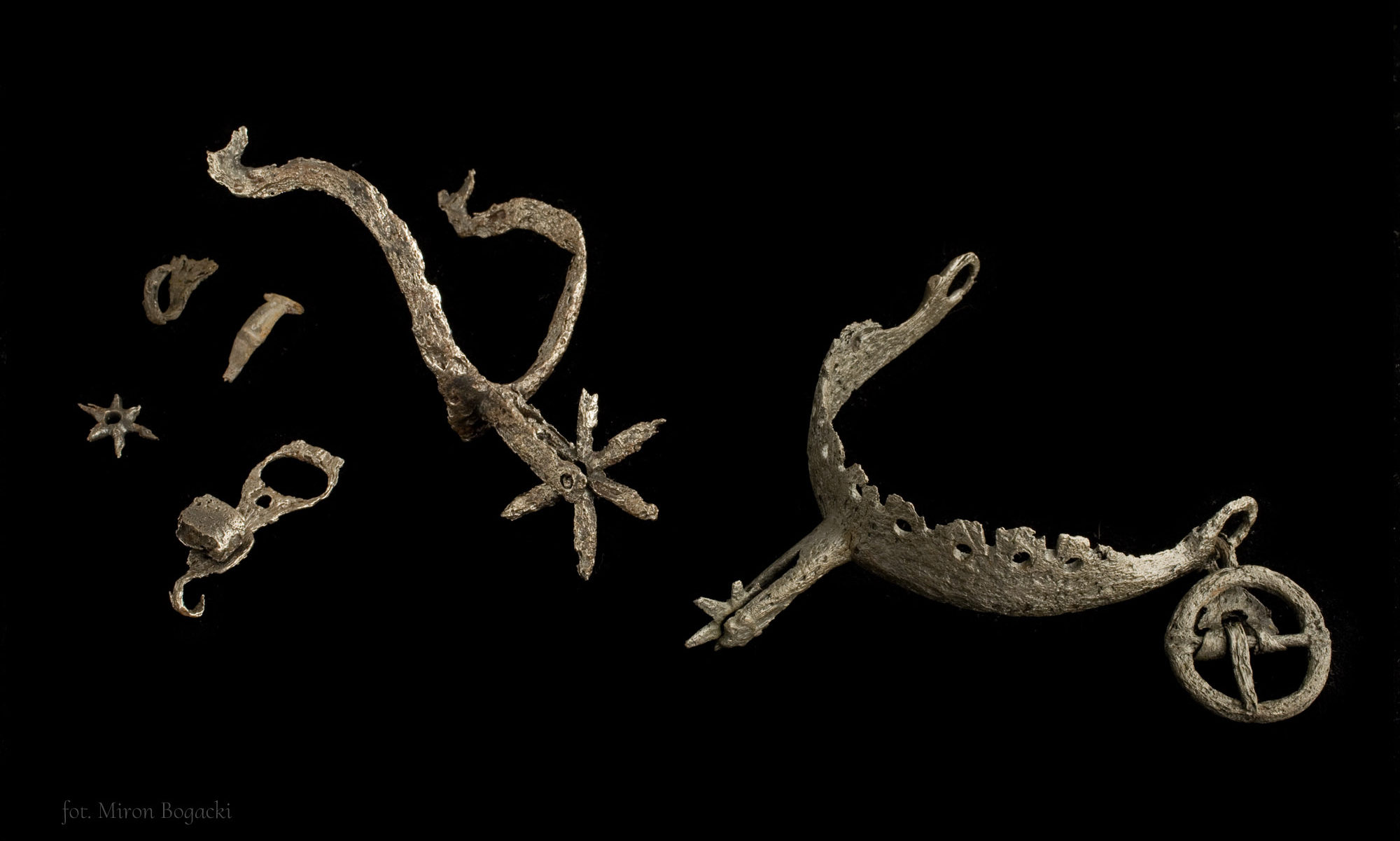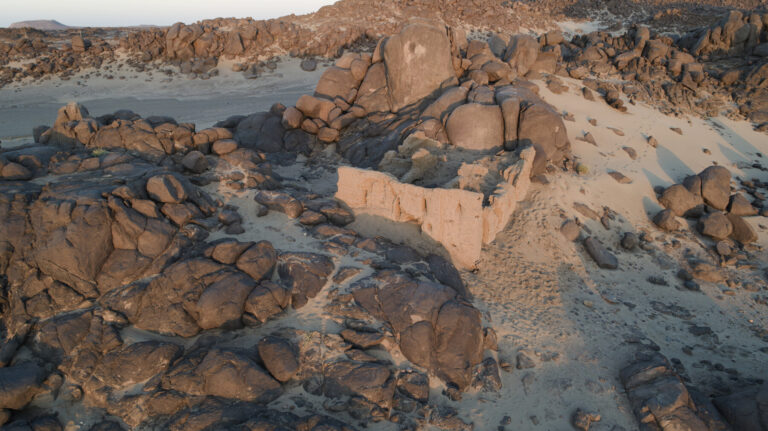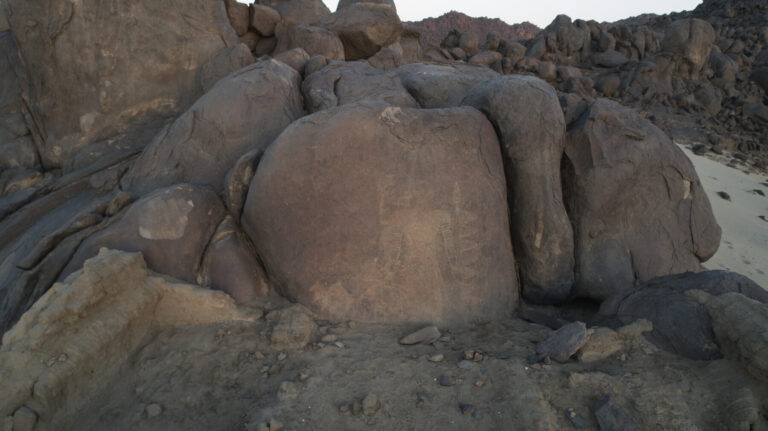Person conducting excavation: dr. hab. Dobrochna Zielińska
Country: Sudan
Site name: Miseeda, region Mahas, 19°53’1.31″N 30°23’35.49″E
Type of the site: church built around a rock drawing and the surrounding sites
Dating: ca. 6000 BC – 19/20th cent.
www: The site of Miseeda
The “Good Shepherd” of Maseeda. An image in the context of the changing cultural landscape of the Third Cataract of the Nile. – financed by NCN (UMO-2019/35/B/HS3/02440).
Near the modern village of Miseeda in the Sudanese part of Nubia, in the area of the Third Cataract, an isolated church has been preserved, which conceals a rock drawing from the Kushite period (7th century BC – 4th century AD), made at least three hundred years before the region was converted to Christianity. A certain similarity of this image to the depiction of the “Good Shepherd” known in early Christian art became the initiating factor for the entire project.
The combination of old rock drawings with much younger sacral architecture is an intriguing situation, unique in Nubia. Both the petroglyph and the church are on the spatial border, but they eliminate the border in time, connecting pre-Christian times with the Christian era.
To understand the reasons and circumstances in which this church was founded, the broader context needs to be studied and understood. Firstly, the spatial context: there are numerous rock carvings in the Third Cataract region. The second context is the period in which the drawing was made, viewed, respected, and perhaps revered. Its meaning must have been transformed between the late Meroitic period and the moment when it became an object of interest for the Christian inhabitants of this region and travelers.




